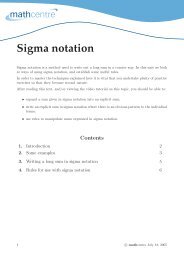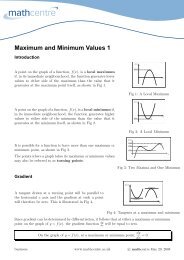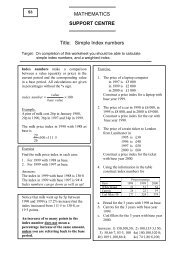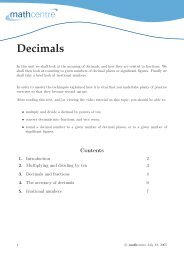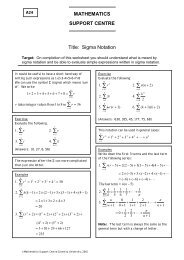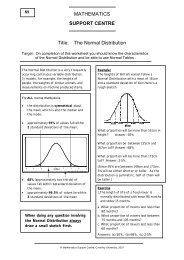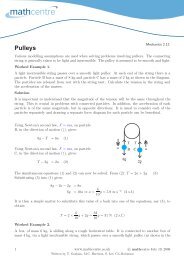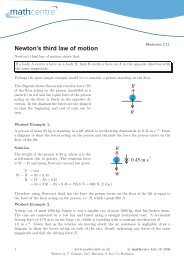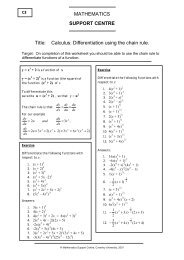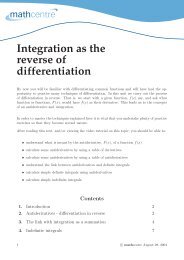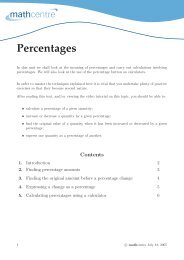Cartesian components of vectors
Cartesian components of vectors
Cartesian components of vectors
You also want an ePaper? Increase the reach of your titles
YUMPU automatically turns print PDFs into web optimized ePapers that Google loves.
3. The length <strong>of</strong> a position vector<br />
What is the length <strong>of</strong> the position vector OP ?<br />
To answer this question, we start by dropping a perpendicular from P down to the (x, y)-plane.<br />
We shall call this new point Q. Then we join the point Q up to the x and y axes, again at right<br />
angles. We shall call the two new points A and B.<br />
z<br />
P (x, y, z)<br />
O<br />
B<br />
y<br />
A<br />
Q<br />
x<br />
Now we know some <strong>of</strong> the lengths in this diagram. First, the length PQ is the height <strong>of</strong> the<br />
point P above the (x, y)-plane. So that length must be z.<br />
The length OA is the distance along the x coordinate axis, so that length must be x. And the<br />
length BQ is the same as the length OA, so that must also be x.<br />
In the same way, the length OB is the distance along the y coordinate axis, so that length must<br />
be y. And the length AQ is the same as the length OB, so that must also be y.<br />
z<br />
P (x, y, z)<br />
z<br />
A<br />
O<br />
x<br />
y<br />
Q<br />
y<br />
x<br />
B<br />
y<br />
x<br />
Now we join the points O and Q. Then OAQ is a right-angled triangle, and so is OBQ. So the<br />
length OQ can be found by using Pythagoras’s Theorem, in either <strong>of</strong> these triangles. We obtain<br />
the formula<br />
OQ = √ OA 2 + AQ 2<br />
= √ x 2 + y 2 .<br />
(or<br />
√<br />
OB2 + BQ 2 )<br />
Now we can use the right-angled triangle OQP. If we apply Pythagoras’s Theorem to this<br />
5 c○ mathcentre July 18, 2005



